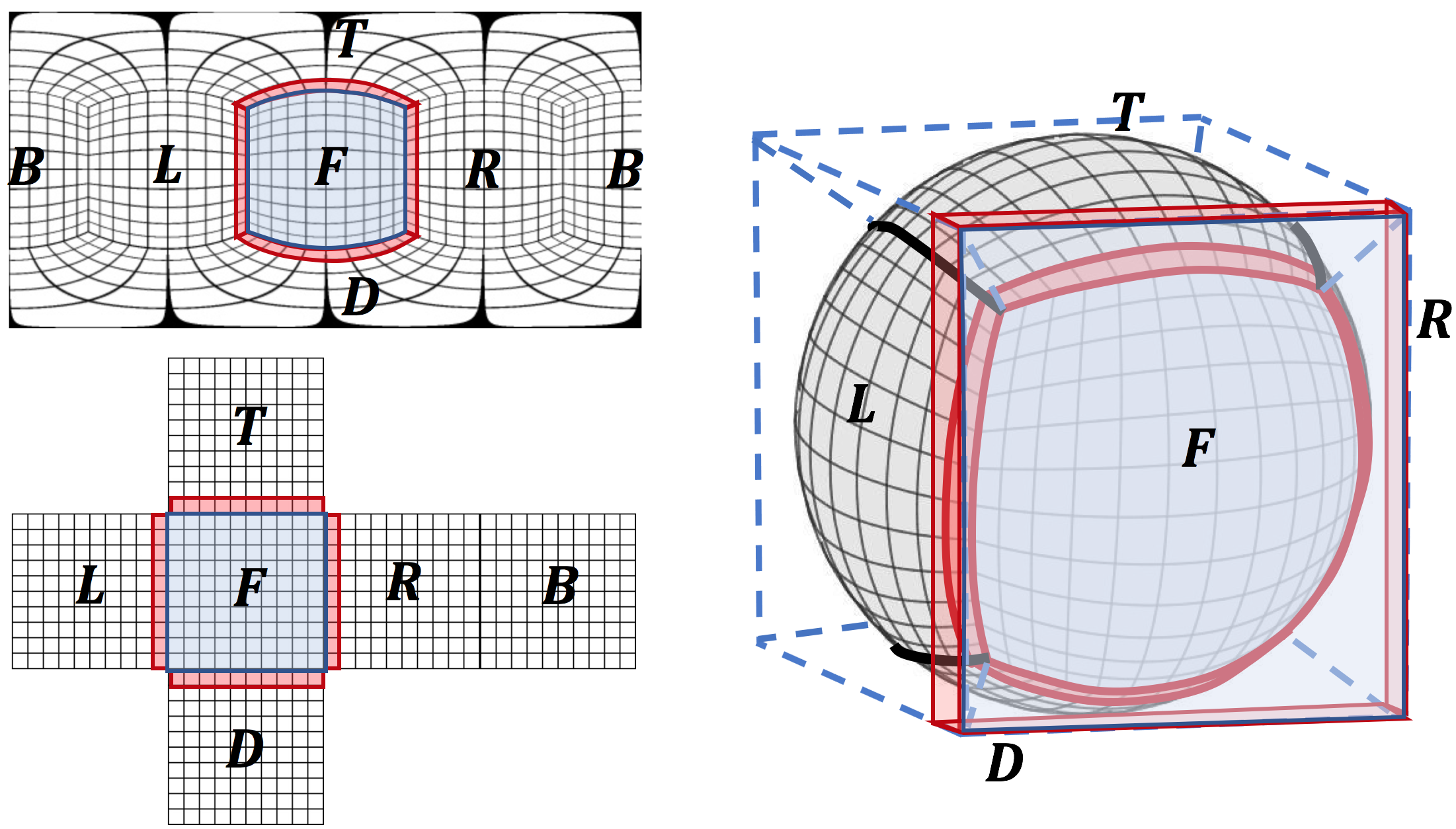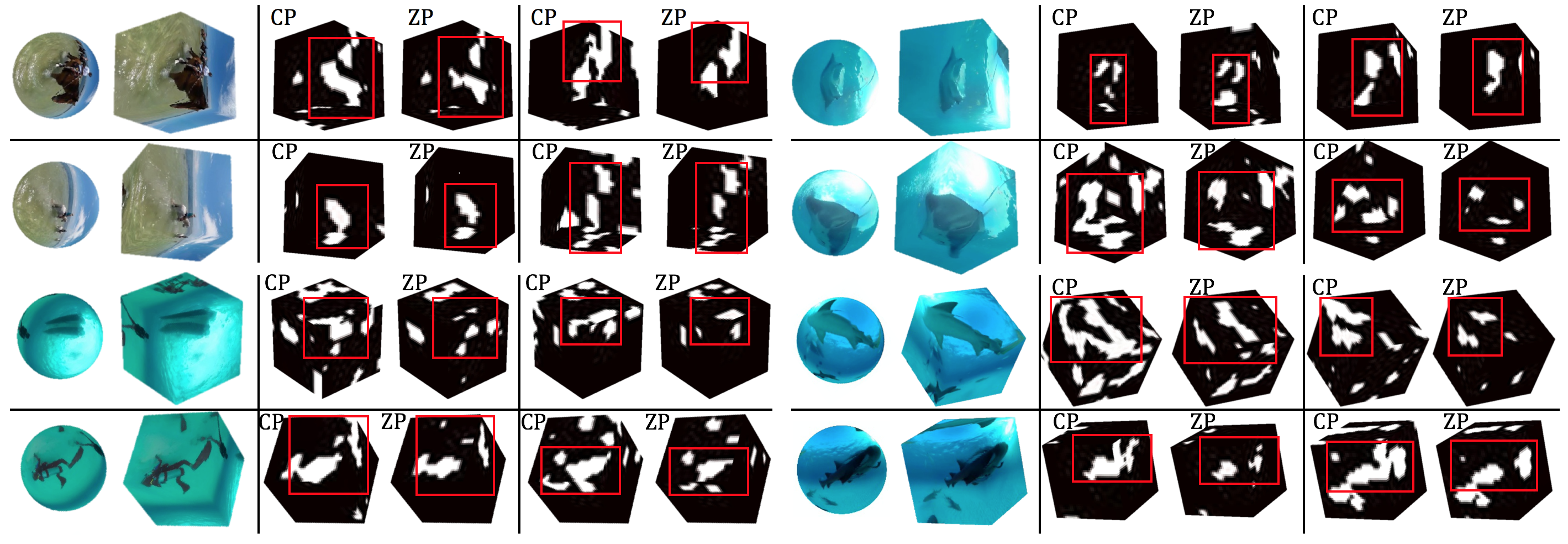This is the code for Cube Padding for Weakly-Supervised Saliency Prediction in 360° Videos, including ResNet-50 static feature extractor and ConvLSTM temporal model.
Clone the repo:
git clone https://github.com/hsientzucheng/CP-360-Weakly-Supervised-Saliency.git
Tested under
- Python == 3.6
- PyTorch >= 0.3
- cv2 == 3.4.2
- Other dependencies:
- tqdm, scipy, matplotlib, PIL, ruamel_yaml, collections
You can download our convolution LSTM model here The model should be put into the directory:
[CP-360-Weakly-Supervised-Saliency PATH]/checkpoint/CLSTM_model_released.pth
Performance: AUC 0.898; CC 0.494; AUCB 0.874
The cube padding module in cube_pad.py
python [CP-360-Weakly-Supervised-Saliency PATH]/model/cube_pad.py
To get Wild-360 dataset, check our project website.
We use 25 videos for testing and 60 for training as shown in txt files in utils.
|- Wild360_GT
| |- video_id_1.mp4
| | |- 00000.npy
| | |- 00001.npy
| | | ...
| | |- overlay
| | | |- 00000.jpg
| | | |- 00001.jpg
| | | | ...
| |- video_id_2.mp4
| | | ...
|- 360_Discovery
| |- train
| | |- train_video_id_1.mp4
| | |- train_video_id_2.mp4
| | | ...
| |- test
| | |- test_video_id_1.mp4
| | | ...
- To run the inference process, you should first modify the config file
vim [CP-360-Weakly-Supervised-Saliency PATH]/config.yaml
- After installing requirements and setting up the configurations, the static model can be run as:
cd static_model
python dataset_feat_extractor.py --mode resnet50 -oi -of
- Having the features from the static model, run the temporal model by:
cd temporal_model
python test_temporal.py --dir ../output/static_resnet50 --model CLSTM_model_released.pth --overlay
- These commands are in the script, just run:
bash inference.sh
- You might want to modify the config file first for some training args:
vim [CP-360-Weakly-Supervised-Saliency PATH]/config.yaml
- Extract optical flow to train the temporal model:
cd static_model
python dataset_feat_extractor.py --mode resnet50 -om
- Train your model by running:
bash train.sh
- The model you train will be saved in (see config.yaml for these args):
vim [CP-360-Weakly-Supervised-Saliency PATH]/checkpoint/CLSTM_s_[l_s]_t_[l_t]_m_[l_m]/CLSTM_[epoch]_[iter].pth
- Our method to train temporal model is only suitable for stationary videos (without camera motion). For more complicated cases, you might want to compensate camera motion and apply 360 stablization.
@inproceedings{cheng2018cube,
title={Cube padding for weakly-supervised saliency prediction in 360 videos},
author={Cheng, Hsien-Tzu and Chao, Chun-Hung and Dong, Jin-Dong and Wen, Hao-Kai and Liu, Tyng-Luh and Sun, Min},
booktitle={Proceedings of the IEEE Conference on Computer Vision and Pattern Recognition},
pages={1420--1429},
year={2018}
}


